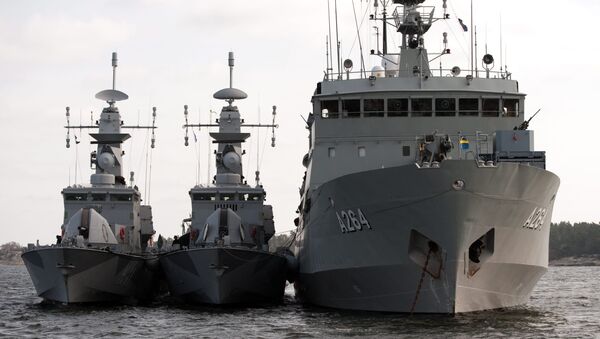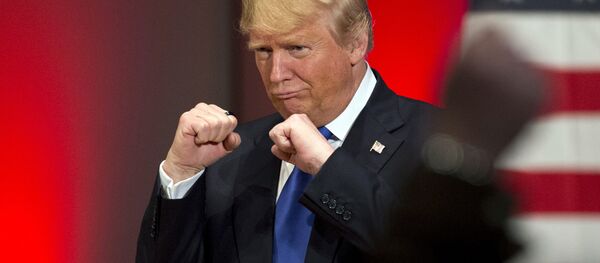Swedish daily Dagens Nyheter columnist and defense expert Mikael Holmström wrote that Donald Trump's victory was a "slap in the face" and "bad news" for Sweden's security.
In recent years, Sweden's military cooperation with the US rose to an unprecedented level, as US outgoing President Barack Obama and Vice President Joe Biden visited Stockholm, pledging US security guarantees. Whereas Sweden formally remains non-aligned, its ties to NATO have been tightened, as a result of which many view Washington as the only possible redeemer in case of a highly unlikely Russian "sneak attack."
Trump notoriously called NATO, Washington's foremost foreign policy instrument in Europe "obsolete" and "outdated." Additionally, he questioned the mutual defense clause, the very foundation of NATO, and called on member states to increase their defense expenditure to make good NATO's common guidelines, rather that implicitly relying on Washington for protection. According to Sydsvenskan, Sweden is now the Baltic Sea state that spends least on its own defense (1.1 percent of GDP). As Sweden is not bound by NATO guidelines, Stockholm should no longer hope for the same benevolent treatment from the US, Lönnaeus pointed out.
"There is no doubt that Sweden must also increase its defense expenditure to be on par with its Nordic peers. I believe 1.5 percent is something we have to step up to," Christian Democrat Mikael Oscarsson told Swedish Radio.
Despite its non-aligned stance, Sweden has gradually increased its dependence on US and NATO since World War II. Throughout the Cold War, Sweden gathered intelligence data on the Soviet Union and kept runways prepared for US warplanes. Since 1990s, Sweden has stepped up its engagement in NATO exercises. Swedish troops were deployed under NATO command in Afghanistan, whereas Swedish warplanes participated in the NATO offensive in Libya. In Summer, the Swedish government signed a host country agreement with NATO, which explicitly opens for foreign troops on Swedish soil.
Today, there are 65,000 US soldiers stationed at military bases in Europe. Earlier this year, the Pentagon officials announced plans to deploy 4,000 troops, 250 tanks and Bradley armored vehicles, self-propelled howitzers and 1,700 pieces of other wheeled vehicles and trucks in Eastern Europe to stop possible Russian aggression.





